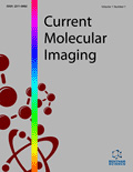Abstract
C. elegans is a useful model for studying neuronal and genetic mechanisms underlying behavior. Calcium imaging, facilitated by genetically encoded calcium indicators, is a convenient tool for linking the function of a gene, neuron, circuit and tissue with a particular behavioral phenotype. Because C. elegans has a transparent body, calcium imaging can be performed non-invasively in intact animals. Over 10 homemade calcium imaging systems have been used to study C. elegans, each with a unique strategy to achieve reliable and sensitive results. This review summarizes these strategies, and compare and contrast their underlying principles. This discussion may help the development of calcium imaging systems as better research tools.
Keywords: C. elegans, calcium imaging, cameleon, freely behaving animals, G protein signaling, G-CaMP, genetically encoded calcium indicator, locomotion.
 19
19

